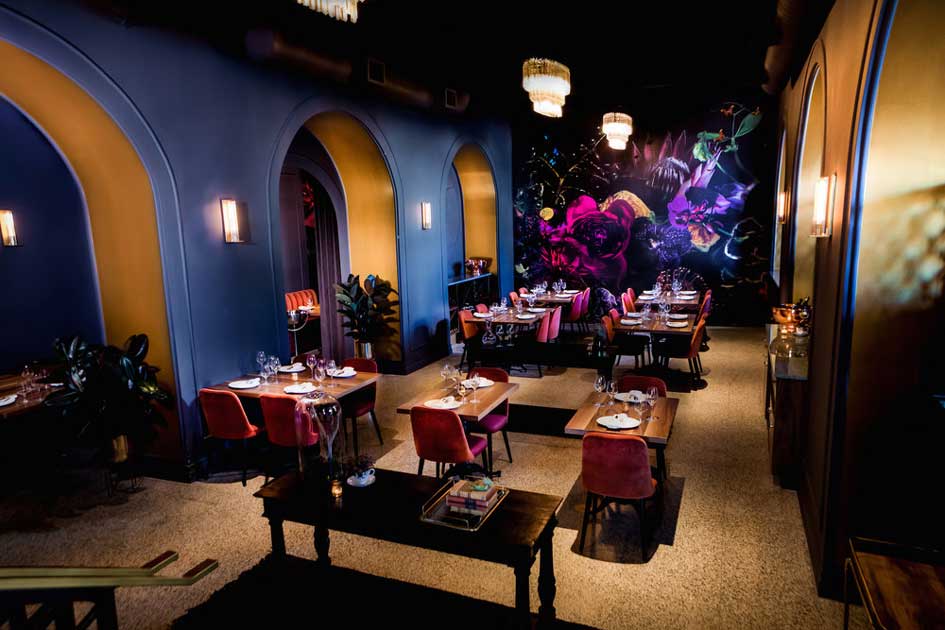Chinese Food Islamabad: Take Pleasure In Genuine Chinese Food at its Best
Chinese Food Islamabad: Take Pleasure In Genuine Chinese Food at its Best
Blog Article
Savor Authentic Eastern Cuisine With a Pan-Asian Twist for a Culinary Experience
Starting a culinary trip via genuine Oriental cuisine, enhanced with a Pan-Asian twist, provides a special possibility to discover the rich tapestry of tastes that specify the region's varied culinary practices. This experience welcomes you to savor the elegant balance of tastes-- pleasant, salty, spicy, and sour-- harmonized by aromatic natural herbs and spices. Think of the ingenious fusion of Thai curry and ramen or the unanticipated pleasure of sushi burritos. As you ponder these luring recipes, take into consideration the social stories and historic influences that shape them, each bite supplying a tale waiting to be uncovered.

Checking Out Pan-Asian Tastes
In the world of worldwide gastronomy, Pan-Asian cuisine stands out for its exceptional variety and the unified interaction of flavors from various Eastern cultures. This cooking technique commemorates the abundant customs and unique ingredients located throughout the continent, creating a tapestry of tastes that is both fascinating and rewarding. Key to Pan-Asian food is its ability to stabilize different tastes-- sweet, salted, spicy, and sour-- while highlighting the quality and high quality of each active ingredient.
From the umami-rich soy sauce of Japan to the intense chili peppers of Thailand, Pan-Asian food uses a substantial combination of tastes. These aspects are usually combined in inventive methods, boosting dishes with layers of complexity. As an example, the use of fragrant herbs such as lemongrass and cilantro, common in Vietnamese and Thai cuisine, includes a refreshing brightness to dishes, while the consolidation of coconut milk provides a luscious, abundant appearance.
The focus on fresh produce and aromatic flavors ensures that each meal is not only a feast for the taste however also for the detects. Pan-Asian food invites restaurants to embark on a culinary journey, checking out the substantial and varied landscapes of Eastern gastronomy with every bite.
Fusion Dishes to Try
While Pan-Asian cuisine is commemorated for its standard flavors, the modern cooking landscape is significantly accepting fusion meals that mix these classic aspects with influences from other regions. This ingenious technique not only honors the abundant heritage of Oriental cookeries yet likewise introduces unique taste experiences that attract modern palates.
An archetype of such a fusion dish is the Korean-Mexican taco, where seasoned bulgogi beef is covered in a cozy tortilla, covered with kimchi and a zesty gochujang-infused salsa. This mix marries the vibrant, full-flavored flavors of Korea with the lively, fresh elements of Mexican cuisine. Likewise, sushi burritos have actually gained popularity, joining together the delicate virtuosity of Japanese sushi with the hearty, hand-held comfort of a burrito, typically including fusion components like tempura shrimp and avocado with a drizzle of wasabi mayo.
Another notable dish is Thai curry ramen, which instills the luscious, aromatic seasonings of Thai curry into the comforting brew of traditional Japanese ramen, producing an unified mix that entices the senses. These combination meals extend beyond simple uniqueness; they represent a culinary discussion in between societies, urging expedition and innovation worldwide of Pan-Asian food.
Essential Ingredients and Spices
To absolutely appreciate Pan-Asian cuisine, one need to comprehend the vital active ingredients and spices that form its structure. This varied cooking design draws from an abundant tapestry of Oriental practices, using an unified blend of appearances and tastes. Trick active ingredients consist of soy sauce, fish sauce, and oyster sauce, which pass on a mouthwatering umami depth important to Asian dishes. Corresponding to these are rice vinegar and mirin, providing a delicate acidity and sweet taste.
Aromatic elements are essential, with garlic, ginger, and lemongrass being ubiquitous throughout different Pan-Asian recipes. These components click this supply an aromatic base that improves the complexity of tastes. Flavors such as celebrity anise, cardamom, and cinnamon present heat and personality, echoing impacts from regions like China and India.

Food Preparation Strategies and Tips
Mastering the art of Pan-Asian cuisine requires familiarity with its distinctive food preparation methods, each adding to the vibrant tapestry of flavors this culinary practice is celebrated for. Central to these methods is the stir-fry, a quick cooking strategy that maintains click for info the nutritional honesty and brilliant colors of ingredients. Making use of a frying pan, the stir-fry approach enables for also warmth distribution, crucial for accomplishing the particular structure and flavor equilibrium of Pan-Asian meals.
Another fundamental technique is steaming, specifically prevalent in Chinese food. This gentle approach keeps the all-natural tastes and nutrients of active ingredients, making it optimal for seafood and veggies. Dumplings, a precious staple, commonly gain from steaming, causing soft, succulent appearances.
Grilling, likewise indispensable, imparts great smoky midsts to dishes such as Korean bulgogi or Japanese yakitori (asian restaurant isb). This technique frequently involves seasoning active ingredients, enabling flavors to pass through deeply before food preparation over an open fire or warmer
Lastly, mastering the art of stabilizing tastes-- wonderful, sour, salty, bitter, and umami-- is critical. Properly layering these elements can elevate a recipe from normal to amazing, supplying a complicated and satisfying cooking experience that personifies the significance of Pan-Asian food.
Eating Experiences Worldwide
Across the globe, Pan-Asian food uses an unparalleled eating experience, celebrated for its abundant tapestry of flavors and lively discussions. This culinary sensation has actually transcended cultural limits, catching the hearts and palates of food enthusiasts worldwide. In worldwide cities fresh York, London, and Sydney, Pan-Asian dining establishments serve as fusions where culinary practices from Thailand, Japan, China, and past converge, supplying diners with a diverse mix of meals that highlight the area's variety.
The international appeal of Pan-Asian cuisine lies in its capacity to provide both credibility and innovation. Chefs masterfully wed conventional ingredients such as lemongrass, soy sauce, and miso with modern methods, resulting in dishes that are both acquainted and refreshingly new. This fusion enables diners to start a cooking trip that respects heritage while accepting modernity.
Additionally, eating experiences are elevated with thoughtfully developed environments that show the values of Pan-Asian looks. From minimalist Japanese-inspired insides to dynamic Thai-themed areas, each dining establishment offers an unique atmosphere that complements the culinary offerings. Because of this, patrons are not just eating a meal however partaking in a social experience, making Pan-Asian dining a really global phenomenon.
Conclusion
The exploration of Pan-Asian food provides a profound understanding of the intricate interplay of tastes and cooking traditions throughout Asia. By accepting blend recipes such as Thai curry ramen and sushi burritos, the cooking trip not just highlights the flexibility of her comment is here typical ingredients however also showcases cutting-edge contemporary methods. This gastronomic experience, enriched by essential seasonings and cooking techniques, supplies an unique possibility to appreciate the social variety and culinary virtuosity that specify Pan-Asian cuisine on an international scale.
Embarking on a cooking trip via genuine Eastern cuisine, boosted with a Pan-Asian twist, supplies an unique possibility to explore the rich tapestry of flavors that specify the area's diverse cooking practices.In the realm of international gastronomy, Pan-Asian cuisine stands out for its remarkable diversity and the unified interaction of flavors from different Asian societies. Trick to Pan-Asian cuisine is its capacity to balance different tastes-- sweet, salty, spicy, and sour-- while highlighting the quality and quality of each active ingredient.

Report this page